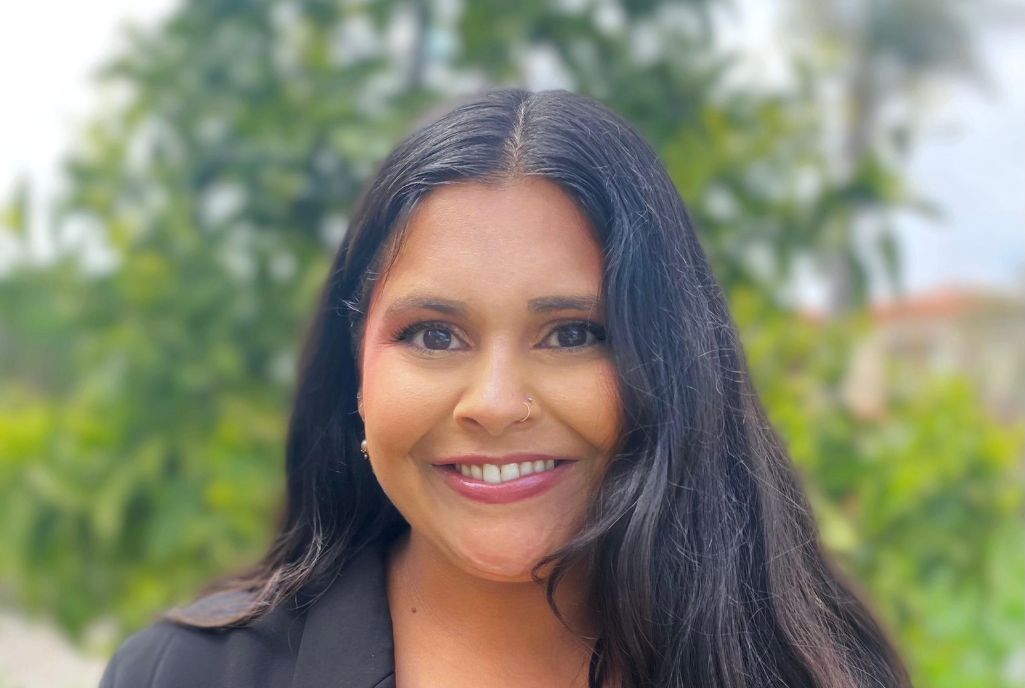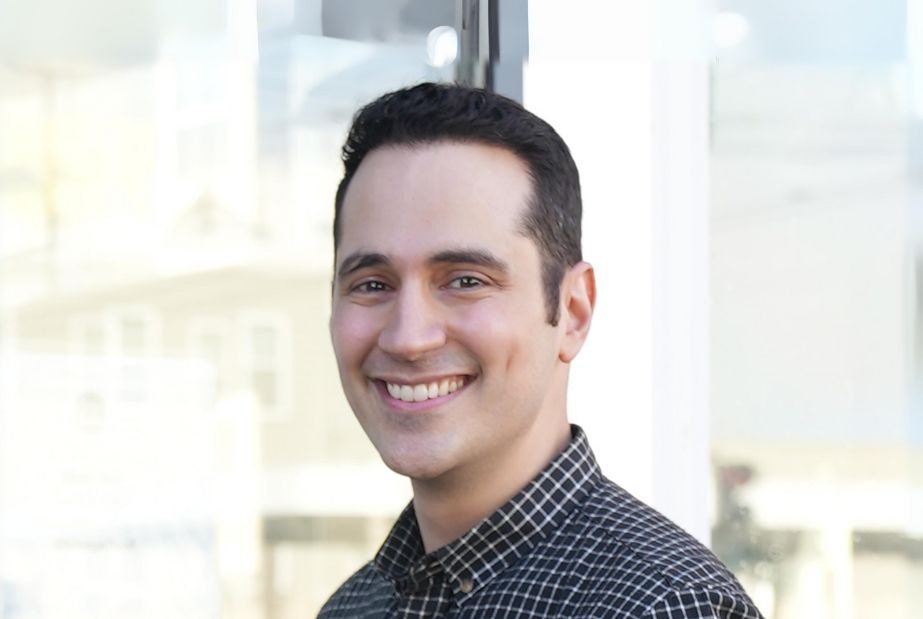Southern California Interdisciplinary Law Journal hosts panel discussions focused on sanctuary laws
By Leslie Ridgeway
.jpg) |
| Interdisciplinary Law Journal Editor-in-Chief Brandon Thompson noted the importance of law journals for their potential impact on lives. |
Scholars from around the nation joined government officials and leaders from advocacy groups March 28 to discuss research and first-hand experience with enforcement of sanctuary city policies at Sanctuary Cities: Safeguarding Constitutional Protections During a Hostile Administration.
The event, presented by the Gould School’s Southern California Interdisciplinary Law Journal (ILJ), included two panel discussions featuring individual scholar presentations on research, as well as advocates discussing enforcement issues, immigrant rights, judicial opinions and grassroots activities.
ILJ Editor-in-Chief Brandon Thompson started off the symposium by highlighting the importance of law journals, not only for the writing and editing skills students gain, but because of the potential impact their work has on lives.
“There are real people behind every issue,” he said. “The law is there to solve contemporary issues we are facing, which is the primary purpose of our journal.”
Gould School Dean Andrew Guzman applauded the journal for taking on the controversial topic of immigration at the symposium.
“Our students are tackling a thorny topic, at a critical time,” he said. “But it’s a topic that needs to be addressed. To me, that shows a true sensitivity to the broader social climate beyond these walls, it shows a commitment to human rights, and it shows meaningful leadership qualities.”
He also acknowledged the roles of the Immigration Clinic and International Human Rights Clinic in helping people in need, as well as USC’s Immigrants and Global Migration Initiative (IGMI), housed at Gould. IGMI was a key organizer of the ILJ symposium.
Also providing opening remarks was Prof. Manuel Pastor, co-director of the USC Dornsife Center for the Study of Immigrant Integration (CSII), which is a co-sponsor of the symposium. Pastor noted how many Californians’ lives are affected by immigration, with 900,000 undocumented immigrants in Los Angeles County, 850,000 U.S.-born relatives of these immigrants, and 250,000 lawful permanent residents who also have family ties to undocumented immigrants.
(17).jpg) |
| Dean Andrew T. Guzman applauded the journal for shining a spotlight on the topic of immigration. |
“That means that in L.A. County, nearly 20 percent of 10 million people here are touched by the issue of someone’s uncertain legal status,” he said. “What we do in this moment is going to be remembered. We are in the midst of an existential crisis in America about what kind of nation we want to be. Are we going to be a nation that builds walls instead of bridges and accepts the terrorization of families as standard practice for law enforcement?”
The first panel, Researching Enforcement, Federalism and Sanctuary Cities was moderated by UCLA Law Prof. Ingrid Eagly and covered scholarly research into sanctuary policies, as well as subtle challenges to legal migration introduced by the Trump Administration while attention has been focused on the wall issue, and reasons why violations of sanctuary laws have continued. Panelist Dr. Peter Mancina of the University of Oxford showed footage of a San Francisco Police Department officer threatening to deport street vendors and noted that law enforcement for the most part does not enforce discipline for such actions.
“Often sanctuary policies are received with skepticism, criticism and sometimes outright rebellion,” he said. “Rather than enforcing sanctuary law, the law has been reaffirmed through non-disciplinary verbal admonishment. While this corrective action minimally addresses the concerns of the public, it fails to bring real consequences.”
Dr. Emily Shrider of the University of Wisconsin-Madison discussed her research into policies developed by Rust Belt cities ostensibly to improve immigrants’ lives. She found that city leaders are giving lip service to policies welcoming immigrants and helping them integrate with society, but the reality is that most cities restrict benefits and employment to citizens, she said.
“They might declare themselves immigrant-friendly, but they don’t implement policies that do any of these things,” she said.
While President Trump has touted the border wall between the U.S. and Mexico, a second wall is being erected in the form of quietly-enacted policies and legislation that create difficult-to-surmount obstacles for legal immigrants wishing to apply for a visa, green card, or naturalized citizenship, said Prof. Ming Hsu Chen of the University of Colorado Law School. Lawyers and community groups have largely been silent about these policies given their obscurity. Tackling this issue will require a new focus of efforts, she said.
“The shift that has to happen is that we move from individual to more coordinated action,” she said. “There needs to be a political and social movement that relies on a campaign of transparency and puts pressure on Congress to hold hearings and bring attention to these issues. Building that kind of movement means significant challenges.”
Numerous myths about sanctuary cities whip up public fear that immigrants are pouring into all parts of the country and stealing benefits from resident Americans, said Prof. Kit Johnson of the University of Oklahoma College of Law. She showed footage of Republican political ads distributed throughout the Midwest that delivered the exact same fear-based message, substituting Democratic candidates depending on what part of the country they were in – regardless of the jurisdiction’s sanctuary status.
“The common narrative is that (immigrants) are spreading and we should be terrified,” Johnson said. “Almost none of those (candidates) represent places with sanctuary jurisdiction. Many parts of country do not identify as sanctuary cities. We can say this myth is not true.”
(11).jpg) |
| A panel moderated by USC Immigrants and Global Migration Initiative Director Elle Fersan (left) focused on the future of sanctuary cities. |
The second panel, Advocating for the Rights of Immigrants, took a look at the future of sanctuary cities and actions to protect the constitutional rights of undocumented individuals. Layla Razavi of the California Immigrant Policy Center detailed the effect of carve-outs in Senate Bill 54, necessary to ensure its passage. Law enforcement is using these carve-outs to work around some of the law’s tenets, Razavi said. Examples include jails circumventing a stipulation that Immigration and Customs Enforcement (ICE) not have onsite office space by creating communal office space that ICE officials occupy. Law enforcement also found a way to skirt a requirement that immigrant jail release date information not be shared with ICE unless it was public, she said.
“Since SB 54 was enacted, more jurisdictions are doing mass information dumps on their public websites,” she said. “Personal information is available, even for victims of domestic violence.”
Razavi said California Republicans trying to expand carve-outs are not likely to be successful, but a growing moderate wing within the California Democratic Party is feeling pressure from law enforcement to loosen more restrictions within the law.
In the Los Angeles area, immigration policies have evolved over the years with concerted efforts by government officials to work with advocates and law enforcement to make existing policies more effective, said Dr. Linda Lopez, chief of the Mayor of Los Angeles’ Office of Immigrant Affairs. These efforts have been threatened by federal attacks on local sanctuary cities as well as local cities passing anti-sanctuary city legislation. People in other states are often surprised at the backlash in California, she said.
“When I speak in Atlanta, where it’s been tough for them, they think California is like this haven and this dream and we have all these progressive immigrant inclusive policies,” she said. “But we also have jurisdictions that are not supportive of immigrants. In the movement to build out the ‘sanctuary state,’ we still have that resistance here, in a place like California.”
The issue of immigrants convicted of crimes in the U.S. facing a kind of double jeopardy was covered by Prof. Jean Reisz, co-director of the Gould School’s Immigration Clinic. She detailed the special challenges for convicted immigrants facing violence in their countries of origin, or being sent to countries where they have no family or support systems and don’t even speak the language.
“You will be barred from seeking asylum if you commit certain crimes,” she said. “You then would have to show a higher degree of harm if you’re being sent back to your country of origin. You are not eligible for discretionary forms of relief such as DACA. And detention is a factor – you may have served your 30 days for, say, prostitution, but can be mandatorily detained for the entire time your removal proceedings take place, which could be months to years.”
Lulu Ortiz, of El Paso, Tex.-based Fianza Fund stressed the continuing significance of grassroots organizing and political education in sustaining efforts to support immigrants’ rights, especially with the escalation of threats since 2016.
“I want to remind people that things have been worse than expected, but for detained people, they have been pretty darn bad for a really long time,” she said. “The work of shifting the narrative must be continued.”
Elle Fersan, panel moderator and director of the IGMI noted the value of the symposium in developing future strategies to support immigrants’ rights and the need to look beyond American borders to find solutions.
“This is community organizing 101,” Fersan said. “We need to look at how groups can shift the landscape here and across the world – how we learn from other countries’ experiences in fighting back.”

















